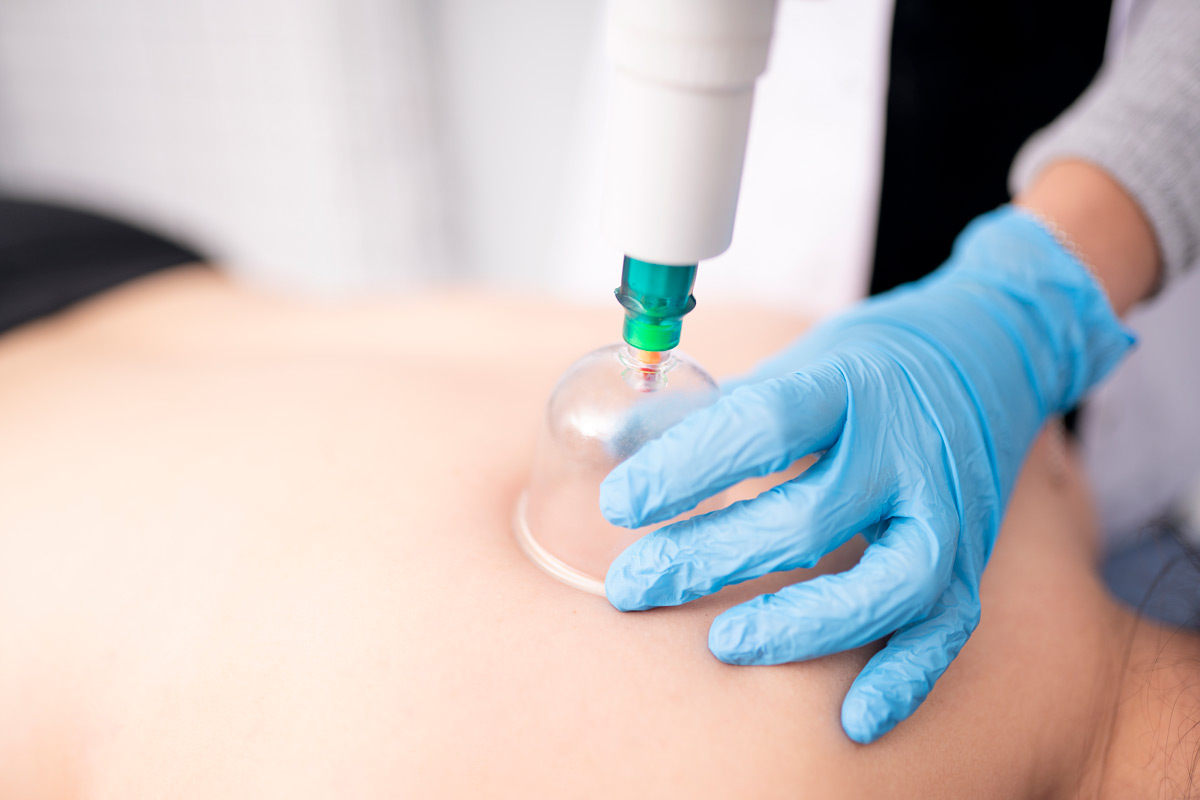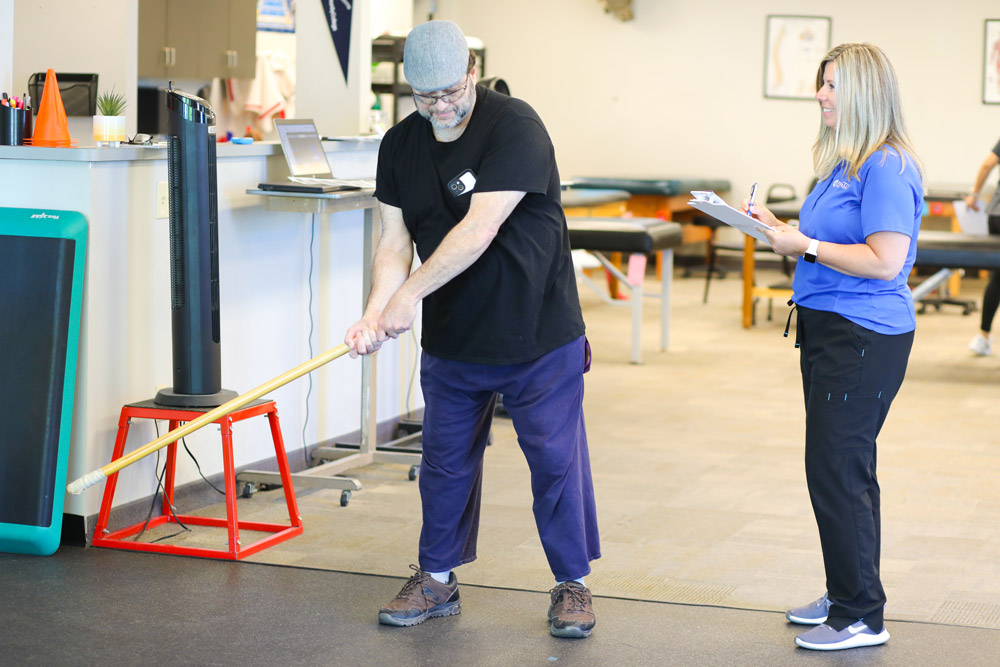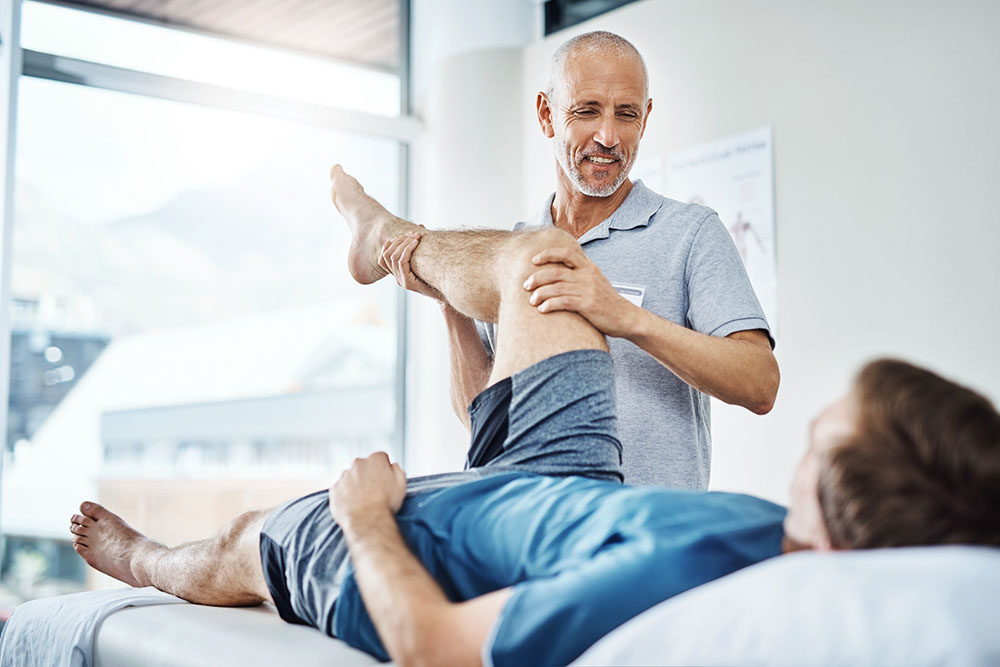Myofascial cupping is an effective pain therapy, helping to reduce tension and adhesions in the soft tissue to decrease pain and improve tissue mobility. Cupping therapy has been used for centuries with many different techniques in different cultures. However, the origin of cupping is still being researched and discussed. The materials used to employ the method can range from hollowed-out animal bones to seashells, nuts, bamboo, or clay. It wasn’t until later that cupping used glass or plastic.
How is Cupping Used at Physical Therapy Clinics?
In physical therapy, a Western perspective is taken, in which cupping is used to stretch out tight muscles and treat trigger points (tender areas from knotted muscles). Secondary benefits can result in an improved range of motion in your joints and decreased scar tissue from surgery or trauma. This treatment is also used superficially, closer to the skin’s surface, to treat tendons, ligaments, muscles, and fascia (thicker tissue).
Different cup sizes are used depending on what type of result a therapist is looking for. For example, a smaller cup might be used if the goal is to treat a specific tendon or ligament or even a trigger point. For instance, if the therapist treats a larger muscle group, such as the hamstrings, larger cups will be used for more surface area.
Benefits of Cupping Therapy
Cupping is a technique that has been used for thousands of years. Although high-quality research about the effectiveness of cupping is not readily available, many benefits include:
- Scar tissue release
- Reduce trigger points,
- Improving lymph and blood circulation
- Decreasing toxins
- and most importantly, decreasing pain
Cupping is one of many non-opioid treatment techniques performed by physical therapists.
Different Forms of Cupping
- Static cupping uses a single cup to several cups placed — and left alone — upon trigger points to allow fluid to be drawn into these areas. This tends to be the least aggressive form of cupping.
- Static cups on a dynamic patient are commonly used when movement causes restrictions in the tissue to present themselves. Cups are placed along with trigger points and adhesions while the therapist directs the patient to move through dynamic, specific movements to move the tissue through common multiplanar movements. This further increases the fluid that passes through the area in patterns that the tissue follows.
- Dynamic cupping on a static patient allows the therapist to encourage fluid flow throughout the entire muscle or system of movement. This tends to be more aggressive than the prior two applications.
- Dynamic cupping on an active patient combines the movement of the cup with the movement of the muscular belly. This further increases fluid through the entire muscular stomach while also moving the tissue through movements with restriction. This is one of the more aggressive forms of application of cupping therapy.
Downside to Myofascial Decompression Treatment
One downside to myofascial decompression treatment is the bruises left behind; because the cups generate suction, causing circular bruises. Most patients are okay with this; however, some aren’t. Some patients get increased tenderness in the treated areas, but most patients recover from bruising after a couple of days. Recovery time can vary depending on how easily you bruise or heal. Patients ask a frequent question: “Can I be treated with cupping every visit?” The answer is it depends. Factors to consider are the area being treated and if there are still bruises present. If cupping is performed too frequently, skin irritation or breakdown of tissue can occur.
When seeking different types of manual therapy, myofascial decompression can be a great treatment technique for loosening up restricted areas quickly and effectively. It is essential to remember cupping isn’t for everyone; results vary depending on the patient, the area being treated, and the result. Myofascial decompression is an excellent way to loosen up fibers in restricted fascia or reduce scarring and should be followed by hands-on myofascial release or soft tissue massage. It can be a perfect tool for patients with different injuries.
If you’re interested in receiving cupping as a treatment, schedule an appointment at one of our Tucson physical therapy clinics.




